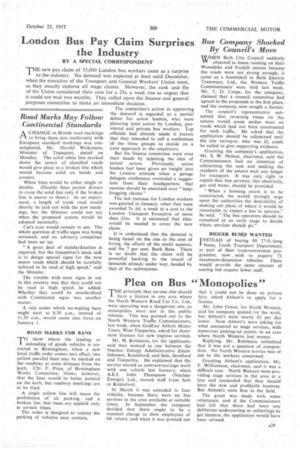Road Marks May Follow Continental Standards
Page 31

If you've noticed an error in this article please click here to report it so we can fix it.
j'CHANGE in British road markings to bring them into conformity with European standard markings was contemplated, Mr. Harold Watkinson, Minister of Transport, stated on Monday. The. solid white line marked down the centre of classified roads would give place to a broken line which would become solid on bends and corners.
White lines would be either single or double. (Double lines permit drivers to cross the solid line only if the broken line is nearer to them.) As an experiment, a length of trunk road would shortly be laid out with the new markings, but the Minister could not say when the proposed system would be adopted nationally.
Cars eyes would remain in use. The whole question of traffic signs was being reviewed, and an advisory committee had been set up.
"A great deal of standardization is required, but the Committee's main task is to design special signs for the new motor roads which should be carefully tailored to be read at high speed," said the Minister.
The trouble with most signs in use in this country was that they could not be read at high speed, he added. Whether they could he standardized with Continental signs was another matter.
A rule under which no-waiting bans might start at 8.30 a.m., instead of 11.30 a.m., would come into force on January 1.




































































































